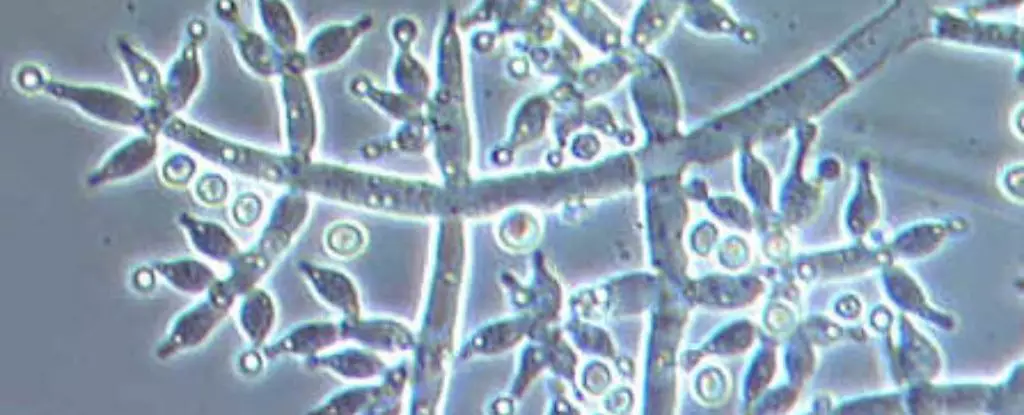The relationship between living organisms and their environments typically revolves around physical and chemical interactions. However, a groundbreaking study conducted by researchers at Flinders University in Australia reveals an unexpected dimension: fungi, specifically Trichoderma harzianum, seem to react positively to sound. This phenomenon raises intriguing questions not just about the mechanisms of growth in fungi, but also about how we can harness these findings for agricultural and ecological benefits.
In a series of meticulously designed experiments, the researchers used a monotonic high-frequency crackle akin to white noise, played continuously for 30 minutes to cultures of T. harzianum. They monitored the growth of these fungi over a period of five days in controlled conditions, comparing the results with those kept in silence. Remarkably, the fungi exposed to sound exhibited accelerated growth rates and a higher rate of spore production. It suggests that T. harzianum could respond to sound waves in a way that enhances its physiological processes.
The potential implications of these findings cannot be overstated. Trichoderma harzianum is an ubiquitous presence in soils worldwide, renowned for its ability to associate with plant roots and bolster their growth. Furthermore, it acts as a natural enemy to numerous pathogenic fungi that can jeopardize agricultural output. The research led by microbial ecologist Jake Robinson posits that deliberate use of sound might offer a novel strategy for agricultural enhancement and soil restoration.
If certain sound frequencies can stimulate beneficial fungi, there could exist practical applications for farmers and conservationists aiming to revitalize soil health and promote sustainable farming practices globally. Imagine, for instance, setting up sound installations in degraded landscapes aimed at enriching microbial communities essential for restoring ecological balance. Such innovations could revolutionize the methods we employ in conservation and agriculture alike.
While the study opens a Pandora’s box of agricultural potential, the underlying reasons for the increased growth in T. harzianum exposed to sound remain uncertain. The researchers speculate that sound waves may mechanically activate specific receptors within the fungal cells. This activation could lead to alterations in biochemical pathways, impacting everything from gene expression to metabolic activity.
Fungi have long been recognized for their complex signaling mechanisms and cellular communication; however, the notion that they respond to sound is still in its infancy. The analogy drawn between the nerve-like electrical activity observed in fungi and human speech begs further investigation into how these cellular mechanisms compare and what biological advantages they may confer.
While sound may offer beneficial effects for T. harzianum, it is essential to recognize the dual nature of such stimulus. Previous research highlighted a contrasting reality; certain sounds, such as those emitted by refrigerators, have been documented to enhance the growth of harmful fungi responsible for spoiling food. This raises a crucial point: sound does not uniformly benefit all organisms within the ecosystem.
The implications of selectively utilizing sound in agricultural practices necessitate thorough investigations into the outcomes of such interventions. Could an overarching soundtrack favor beneficial organisms while simultaneously disadvantaging harmful ones? Ultimately, the outcomes could significantly shift the paradigm of pest control and overall soil health management.
Looking Ahead: The Future of Sound in Ecological Research
As scientists delve deeper into how auditory stimuli affect fungi, bacteria, and plants, this line of research is poised to open new avenues in microbial ecology. The intricate relationships formed by sounds in ecosystems could lead to unprecedented applications in agriculture, restoration ecology, and even urban planning to create healthier environments.
Ultimately, while sound may be an abstract concept often attributed only to the realm of human experience, its resonance could be pivotal in cultivating the ecosystems we depend on. The ongoing investigations into fungi’s response to sound are not just an academic exercise; they are a beacon of hope for sustainable practices designed to counter the degradation of our planet’s vital resources.


Leave a Reply